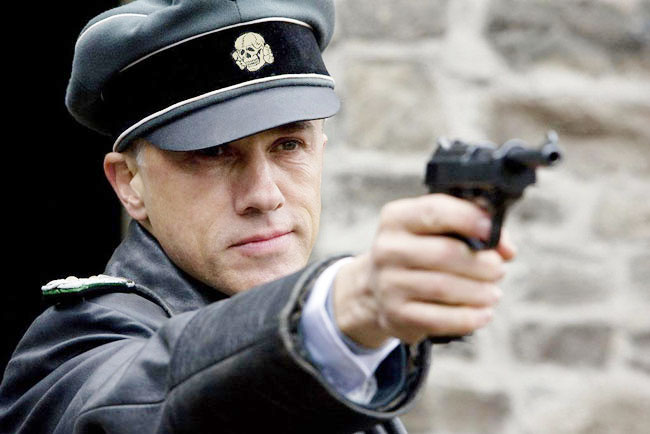
Even in film, first impressions count for a lot. Since movies only have a relatively brief amount of time to establish their story, setting, and characters, it takes skill to concentrate and shorthand entire characters and what they ultimately mean to the story being told. It’s how a character is presented that leads to why they are being presented that way: a ruggish-looking man with face stubble wearing a leather jacket and carrying a whip, for example, tells you a lot through visuals alone of who this character is. Place him in the jungle and already half his story is told almost immediately to the audience.
Character introductions mean a lot because filmmakers rely on these few minutes to get across to audiences everything they need to know. Sometimes they’re done clumsily, leading to character development that’s dragged across an entire film to unsatisfactory ends.
But when they’re done right, they exemplify the artistry that goes into filmmaking, where directors, editors, actors, set designers and wardrobe departments work in concert to create a striking, singular vision of a character that will stick in an audience’s mind. Some of these have even become iconic, and for good reason: they are images that themselves become shorthand within our culture.
The guy with stubble and a whip? Adventurer. Intense, well-mannered, but scary guy? Serial killer. Super-smooth man in a nice suit smoking a cigarette? Secret agent. Let’s look at fifteen of the best character introductions in film history and what makes them so iconic.
15. Indiana Jones, Raiders of the Lost Ark
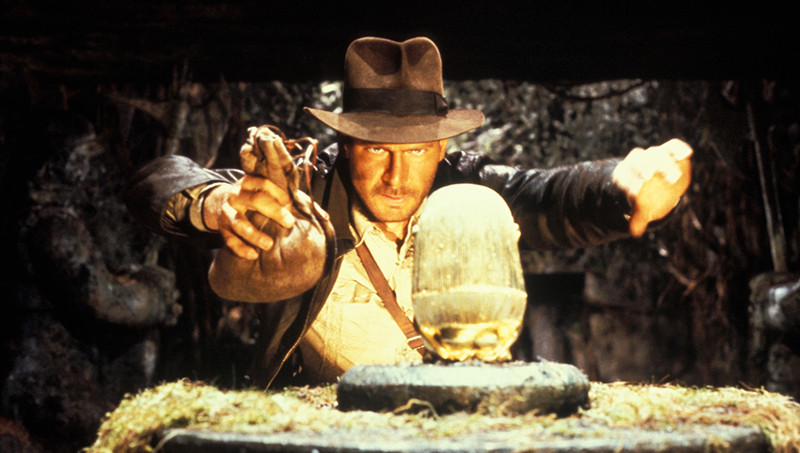
Deep in the jungles of South America, 1936, a small group of explorers, led by a man wearing a wide-brimmed saber fedora leads the expedition. Only seen from behind, he confidently studies the tattered map leading them to their treasure.
But a traitor in his midst pulls a gun to take him out. Hearing the gun cock, this man pulls a coiled whip from his hip and lashes the gun out of the would-be assassin’s hand. Stepping out of the shadows from the jungle canopy, the audience gets their first good look at Indiana Jones, rugged and with a steely look in his eye as he watches the assassin run away in fear.
The introduction of Indiana Jones in Raiders of the Lost Ark is like Filmmaking 101: Spielberg keeps our protagonist veiled in mystery from his first appearance, and we only gather information about who he is as the plot unfolds. But his first introduction lets the audience know all they need to: he’s an adventurer that first captures through great personal peril–and then loses, due to a crooked nemesis archaeologist–the idol he’s seeking.
Within the 7 minute opening sequence, the audience learns everything they need to about Jones–he’s strong, brave, clever, humorous, dedicated, and honorable. A signature of the Indiana Jones franchise would become memorable opening sequences introducing the audience to Indiana Jones, but his first appearance may be his best–and his most iconic.
14. Willy Wonka, Willy Wonka and the Chocolate Factory
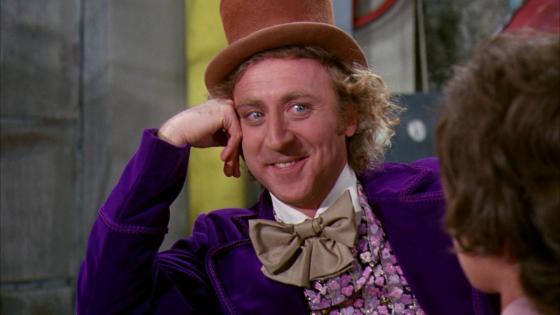
After over half an hour into the runtime of Willy Wonka and the Chocolate Factory, the mysterious and much-talked about candyman makes his first appearance. With a bustling crowd formed around the long-shut gates of his factory, who have gathered to witness Wonka greet and collect the six lucky winners of his worldwide contest to enjoy a personally guided tour of his candy factory, Wonka appears as a solitary figure.
With a clocktower striking the hour, Wonka opens to door to his factory and makes his first public appearance in years. The crowd cheers as Wonka–wearing a chocolate brown top hat and purple velvet coat–hobbles down the red carpet, heavily leaning on his cane for support. Wonka steps carefully down the zig-zag carpet, making his way towards the crowd. The crowd falls silent.
Then, just a few steps away from the gate entrance, Wonka’s cane gets stuck between some bricks–Wonka takes a step, realizes his cane is no longer in his hand, and begins to fall forward….only to recover into a spirited somersault and springing to his feet, arms outstretched in greeting.
Gene Wilder–who played Wonka–remarked that it was an important detail that this is how Wonka is introduced, “Because from that time on, no one will know if I’m lying or telling the truth.”
13. Harry Lime, The Third Man
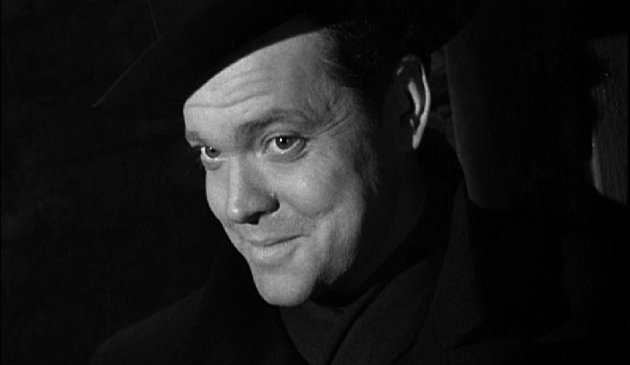
Harry Lime is the central figure in The Third Man, and for much of the running time he’s thought to be dead. Not only that, but from what his dedicated friend Holly Martins (Joseph Cotton) can uncover in post-war Vienna, Lime was involved in some nefarious business involving war profiteering, including stealing penicillin from hospitals, which he then sold on the black market watered down, leading to a number of deaths. Finally, Martins uncovers that Lime had faked his death and gets word through his connections that he wants to meet Lime.
Which he does–on a Ferris wheel in Vienna. Lime (played by Orson Welles) is finally fully seen by the audience and reveals his indifference–to his girlfriend, who has been arrested, to the suffering of the victims of his watered-down medicine. Lime then delivers a chilling speech to his old friend Martins about his view on the crimes he committed during the war.
Referring to the people on the fairground far below, Lime posits to his friend: “Would you feel any pity if one of those dots stopped moving forever? If I offered you £20,000 for every dot that stopped – would you really, old man, tell me to keep my money? Or would you calculate how many dots you could afford to spare? Free of income tax, old man……free of income tax.”
Harry Lime’s monstrous indifference to human life horrifies his old friend, who then begins to scheme against Lime to bring him down. But in this character introduction, in just a few lines of dialogue, the audience is introduced to the face of inhumanity–and it comes in the form of a man who speaks about the death of thousands as if it were simply the cost of doing business.
12. Jules and Vincent, Pulp Fiction
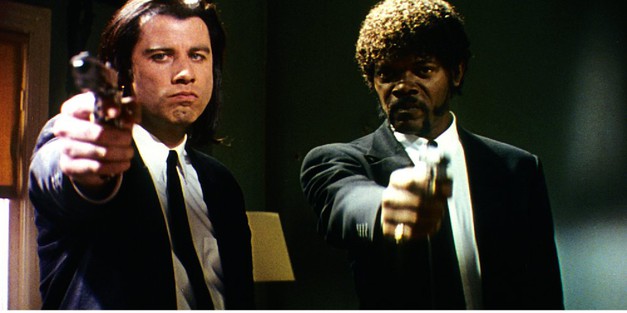
Two men wearing suits, one white and one black, drive down the road on a sunny Los Angeles day, flipping through radio stations and falling into casual conversation. Jules asks his partner, Vincent, about his most recent trip to Europe. Jules wants to know if hash is legal, and Vincent gives him some clarification about how that works legally, including the detail that cops in Amsterdam don’t have the right to search you when they stop you–a detail Jules appreciates.
Then Vincent mentions that it’s the little differences between Europe and America he found amusing. For example: you can buy a glass of beer in a movie theater. But also, a Quarter Pounder with Cheese is called Royale with Cheese (because of the metric system), and a Big Mac’s a Big Mac, but it’s Le Big Mac. It’s a scene of just two associates killing time and flapping their gums trying to amuse each other.
Introducing these two characters in such casual conversation belies their actual nature, as the audience would shortly find out in the next scene: they’re hitmen. They “get into character” just before busting in on a ratty den of some young men that double-crossed their employer.
Jules talks to the men responsible while Vincent scopes out the place for the suitcase these men stole. For a while Jules keeps up his affable charm–asking for a bite of one of the guy’s burgers, taking a sip from his soda–before suddenly turning off the charm and going into his cold-blooded killer mode.
Within moments, Jules and Vincent are wiping out these young men in a hail of gunfire. And with this introduction, Quentin Tarantino let his audience know to expect the unexpected in the thrilling, original film Pulp Fiction.
11. Daniel Plainview, There Will Be Blood
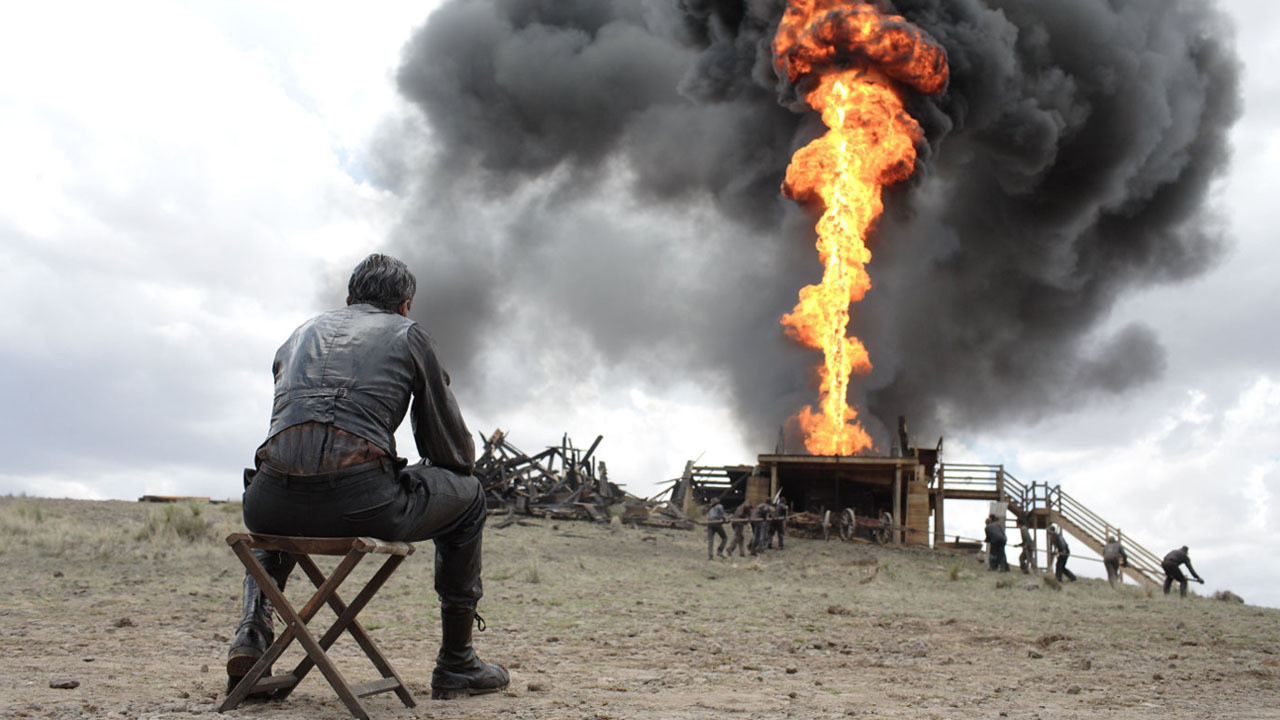
The image opens in an isolated area in New Mexico, to strains of violins in crescendo. The audience sees a solitary prospector working on a mine, deep below the surface, striking away at the wall with his pickaxe. There is barely any light, with only the sparks from each axe-fall as any glimmer of color on the screen. He climbs up the rickety ladder to bring himself out of the hole. He’s then seen hunkered over on the ground as a storm passes as the date, 1898, appears on-screen.
In the next scene, he fits a plug of dynamite into the ore, lights the fuse, and again hauls himself out of the hole. Once he’s out, he begins pulling his tools up but strains to do so. On his third attempt, the dynamite goes off, temporarily shocking him at the entrance of the mine. He climbs back down, but one of the rungs on the ladder snaps in his hand and he’s sent plummeting down the mineshaft. Laying on his back at the bottom, he gasps for air and speaks for the first time: “No!”
His leg is broken, but he has also discovered some silver uncovered from the blast. He puts it in his vest pocket and then hauls himself out of the mine. The next we see him, he’s dragging himself on his back towards town, and the camera swings up to the initial shot of the film, of three large plateaus to signify how far away he is from civilization. But in the next scene, the man is laying on his back on the floor of a silver assayer’s office, receiving a silver certificate.
This is the dynamic introduction of Daniel Plainview, the ruthless, ambitious, and cold-hearted capitalist of P.T. Anderson’s There Will Be Blood. As a character introduction, it’s portrayed nearly wordlessly to depict the sort of drive, hard work, and even foolhardy actions that brought Plainview his first taste of success–and how this experience influenced, for good or ill, the man he would be in the rest of the film.
10. Hannibal Lecter, Silence of the Lambs
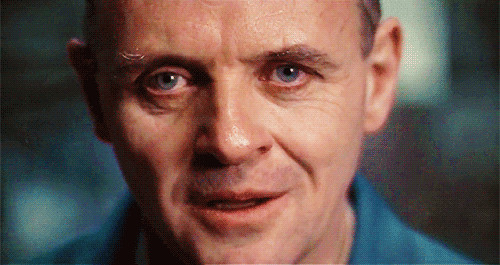
Investigating the serial killer “Buffalo Bill,” who skin his female victims, FBI trainee Clarice Starling (Jodie Foster) is assigned to interview Hannibal Lecter, a former psychiatrist currently incarcerated for being cannibal serial killer, to see if he has any insights on Buffalo Bill. She agrees and travels to the Baltimore State Hospital for the Criminally Insane. After an unpleasant encounter with a prisoner on Lecter’s cell block, she reaches Hannibal’s cell. The camera pans over his bars and reveals Lecter (Anthony Hopkins), standing and awaiting his visitor.
Lecter speaks quietly and politely to Starling, although with command. As she shows him her credentials, Lecter’s face fills the frame, his taut features and glaring eyes the picture of intensity. Lecter begins interrogating Starling, smelling her through the vent holes in his glass-covered cage, identifying the type of perfume she uses. But when she tries to move into her own questions, Lecter calls her immediately on her clumsy segue and starts to pick apart the FBI’s assumptions about Buffalo Bill.
She gives him some evidence to look over, which he does leisurely, and then starts to pick apart Starling, correctly identifying her background and how she became an FBI agent–and does so with a tone of mockery and seriousness. He then warns Starling that she shouldn’t try to test him, as the last person who did so had his liver eaten with a nice chianti. Before she leaves, however, Lecter calls her back and gives her a direct clue that may help her case as he stands pressed against the glass.
Although only on-screen for less than 20 minutes, Anthony Hopkins deservedly won Best Actor for his portrayal as the genteel but terrifying Hannibal Lecter in Silence of the Lambs. His introduction–of having the reputation of a cannibalistic killer but the manners of a gentlemen–are exemplified in both his setting (a jail cell encased in bulletproof glass filled with drawings he made from memory of Venice), and his actions–of taunting an FBI agent during an interrogation while remaining civil before reminding her that he’s a very dangerous person. Hopkins’ hypnotic performance is fully on display in the first appearance of this iconic character, who is clearly defined to the audience in this scene.
9. Harmonica, Once Upon a Time in the West
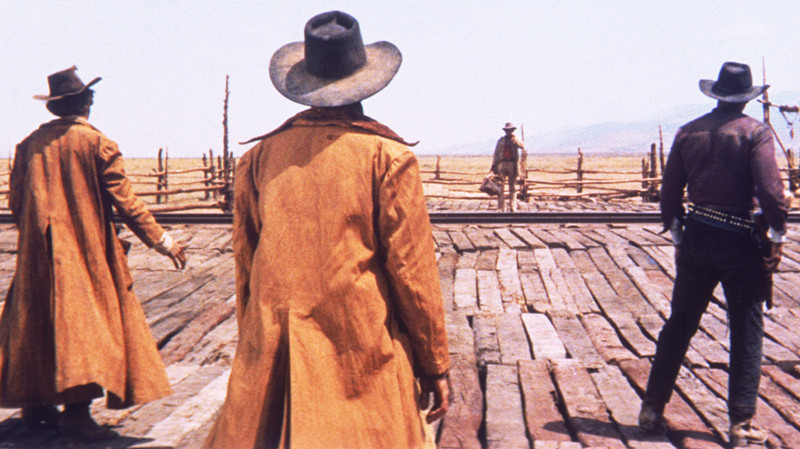
In the opening scene of Sergio Leone’s Once Upon a Time in the West, a train pulls up to a desolate station. On the platform are three men, all eyeing the train carefully and obviously waiting for somebody in particular to arrive. Besides a single package being dropped out of storage, nobody emerges from the train. The three men, seemingly relieved, gather together and are about to walk away when the train pulls out of the station and a single figure is standing on the platform on the other side of the tracks.
The man plays a simple repeating melody on his harmonica, staring at the three men that were sent to kill him. “You Frank?” asks the harmonica-playing man to one of the posse on the other side. “Frank sent us,” one of them says. They stand there for a moment in silence, with the harmonica-playing man still holding his suitcase, before he drops the suitcase and quickly shoots the three men dead with a revolver.
This is “Harmonica” (Charles Bronson), a mysterious gunslinger who has come to kill Frank, a hired gun currently working for a railroad tycoon trying to strong-arm locals off the land. His introduction reflects who this character is throughout the film: a man whose past is unknown to the audience, and much of the rest of the characters, who speaks few words but is more than capable with a gun.
Tense, terse, and well-staged, Harmonica’s introduction in the opening scene of Once Upon a Time in the West is representative of the quality of the rest of the film, which has since earned the reputation of bing one of the best Westerns–if not best films–ever made.